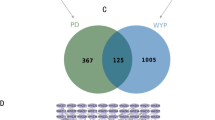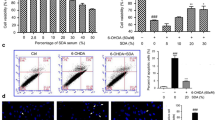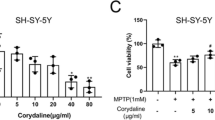Abstract
Objective
To investigate the protective effects and its possible mechanism of Wuzi Yanzong Pill (WYP) on Parkinson’s disease (PD) model mice.
Methods
Thirty-six C57BL/6 male mice were randomly assigned to 3 groups including normal, PD, and PD+WYP groups, 12 mice in each group. One week of intraperitoneal injection of 1-methyl-4-phenyl-1,2,3,6-tetrahydropyridine (MPTP) was used to establish the classical PD model in mice. Meanwhile, mice in the PD+WYP group were administrated with 16 g/kg WYP, twice daily by gavage. After 14 days of administration, gait test, open field test and pole test were measured to evaluate the movement function. Tyrosine hydroxylase (TH) neurons in substantia nigra of midbrain and binding immunoglobulin heavy chain protein (GRP78) in striatum and cortex were observed by immunohistochemistry. The levels of TH, GRP78, p-PERK, p-eIF2α, ATF4, p-IRE1α, XBP1, ATF6, CHOP, ASK1, p-JNK, Caspase-12, -9 and -3 in brain were detected by Western blot.
Results
Compared with the PD group, WYP treatment ameliorated gait balance ability in PD mice (P<0.05). Similarly, WYP increased the total distance and average speed (P<0.05 or P<0.01), reduced rest time and pole time (P<0.05). Moreover, WYP significantly increased TH positive cells (P<0.01). Immunofluorescence showed WYP attenuated the levels of GRP78 in striatum and cortex. Meanwhile, WYP treatment significantly decreased the protein expressions of GRP78, p-PERK, p-eIF2α, ATF4, p-IRE1 α, XBP1, CHOP, Caspase-12 and Caspase-9 (P<0.05 or P<0.01).
Conclusions
WYP ameliorated motor symptoms and pathological lesion of PD mice, which may be related to the regulation of unfolded protein response-mediated signaling pathway and inhibiting the endoplasmic reticulum stress-mediated neuronal apoptosis pathway.
Similar content being viewed by others
Abbreviations
- MPTP:
-
1-methyl-4-phenyl-1,2,3,6-tetrahydropyridine
- PI3K:
-
phosphatidylinositol 3 kinase
- Akt:
-
protein kinase B
- ER:
-
endoplasmic reticulum
- PBS:
-
phosphate-buffered saline
- BSA:
-
bovine serum albumin
- RIPA:
-
radio-immunoprecipitation assay
- PMSF:
-
phenylmethylsulfonyl fluoride
- SDS-PAGE:
-
sodium dodecyl sulfate-polyacrylamide gel electrophoresis
- GRP78:
-
glucose-regulated protein 78
- PERK:
-
proteinkinaseR-like ER kinase
- p-PERK:
-
Phospho PKR like ER kinase
- ATF4:
-
activating transcription factor4
- eIF2α:
-
eukaryotic translation initiation factor 2α
- p-eIF2α:
-
phospho eukaryotic translation initiationfactor 2α
- IRE1 α:
-
inositol requiring enzyme1 α
- p-IRE1 α:
-
phospho inositol requiring enzyme1 α
- XBP1:
-
X-boxbinding protein1
- ATF6:
-
activating transcription factor 6
- CHOP:
-
CCAAT/enhancer-binding protein homologous protein
- ASK1:
-
apoptosis signal regulating kinase 1
- JNK:
-
C-Jun N terminal kinase
- p-JNK:
-
phospho C-Jun Nterminal kinase
- Caspase-12:
-
cysteinyl aspartate specific proteinase 12
- Caspase-9:
-
cysteinyl aspartate specific proteinase 9
- Caspase-3:
-
cysteinyl aspartate specific proteinase 3
- ISR:
-
integrated stress response
- ERAD:
-
ER-related degradation
- TRAF2:
-
TNF receptor-associated factor 2.
References
Schober A. Classic toxin-induced animal models of Parkinson’s disease: 6-OHDA and MPTP. Cell Tissue Res 2004;318:215–224.
Schmidt N, Ferger B. Neurochemical findings in the MPTP model of Parkinson’s disease. J Neural Transm (Vienna) 2001;108:1263–1282.
Simon DK, Tanner CM, Brundin P. Parkinson disease epidemiology, pathology, genetics, and pathophysiology. Clin Geriatr Med 2020;36:1–12.
Surmeier DJ, Obeso JA. Halliday G. Selective neuronal vulnerability in Parkinson disease. Nat Rev Neurosci 2017;18:101–113.
Oertel W, Schulz JB. Current and experimental treatments of Parkinson disease: a guide for neuroscientists. J Neurochem 2016;139:325–337.
Radder DLM, Lígia Silva de Lima A, Domingos J, Keus SHJ, van Nimwegen M, Bloem BR, et al. Physiotherapy in Parkinson’s disease: a meta-analysis of present treatment modalities. Neurorehabil Neural Repair 2020;34:871–880.
Crotty GF, Ascherio A, Schwarzschild MA. Targeting urate to reduce oxidative stress in Parkinson disease. Exp Neurol 2017;298:210–224.
Buchberger A, Bukau B, Sommer T. Protein quality control in the cytosol and the endoplasmic reticulum: brothers in arms. Mol Cell 2010;40:238–252.
Jiang P, Gan M, Ebrahim AS, Lin WL, Melrose HL, Yen SH. ER stress response plays an important role in aggregation of alpha-synuclein. Mol Neurodegener 2010;5:56.
Ji M, Niu S, Guo J, Mi H, Jiang P. Silencing RNF13 alleviates Parkinson’s disease-like problems in mouse models by regulating the endoplasmic reticulum stress-mediated IRE1 α -TRAF2-ASK1-JNK pathway. J Mol Neurosci 2020 70:1977–1986.
Ghemrawi R, Khair M. Endoplasmic reticulum stress and unfolded protein response in neurodegenerative diseases. Int J Mol Sci 2020;21:6127.
Kovaleva V, Saarma M. Endoplasmic reticulum stress regulators: new drug targets for Parkinson’s disease. J Parkinsons Dis 2021;11:S219–S228.
Ji HJ, Wang DM, Wu YP, Niu YY, Jia LL, Liu BW, et al. Wuzi Yanzong Pill, a Chinese polyherbal formula, alleviates testicular damage in mice induced by ionizing radiation. BMC Complement Altern Med 2016;16:509.
Kim I, Wang Y, Park K, Tang Y, Teoh J, Vinson J. β-Arrestin1-biased β 1-adrenergic receptor signaling regulates microRNA processing. Circ Res 2014;114:833–844.
Solla P, Fasano A, Cannas A, Mulas C, Marrosu M, Lang A, et al. Dopamine agonist with drawal syndrome (DAWS) symptoms in Parkinson’s disease patients treated with levodopa carbidopa intestinal gel infusion. Parkinsonism Relat Disord 2015;21:968–971.
Li W, Gao H, Li W. Effects of combined Bushen Zhichan Recipe and levodopa in a rodent model of Parkinson disease: potential mechanisms. Med Sci Monit 2020;26:e922345.
Xu Q, Fan W, Ye SF, Cong YB, Qin W, Chen SY, et al. Cistanche tubulosa protects dopaminergic neurons through regulation of apoptosis and glial cell-derived neurotrophic factor: in vivo and in vitro. Front Aging Neurosci 2016;8:295.
Li C, Tsuang Y, Tsai T. Neuroprotective effect of Schisandra Chinensis on methyl-4-phenyl-1,2,3,6-tetrahydropyridine-induced Parkinsonian syndrome in C57BL/6 Mice. Nutrients 2019;11:1671.
Hang W, Fan HJ, Li YR, Xiao Q, Jia L, Song LJ, et al. Wuzi Yanzong Pill attenuates MPTP-induced Parkinson’s disease via PI3K/Akt signaling pathway. Metab Brain Dis 2022;37:1435–1450.
Li YR, Fan HJ, Chai Z, Sun MY, Liu JC, Xiao WS, et al. Neuroprotective and anti-inflammatory effects of Wuzi Yanzong Pills on Parkinson’s disease mice. China J Tradit Chin Med Pharm (Chin) 2020;35:3623–3626.
Li YR, Fan HJ, Chai Z, Jia L, Sun MY, Miao Q, et al. Effects of Wuzi Yanzong Pills on behavior and oxidative stress in Parkinson’s disease mice. China J Tradit Chin Med Pharm (Chin) 2020;35:2795–2799.
Feng GK, Ma XJ, Chen YY, Bian GR, Yang C, Gu BD. Effects of Chailong Jieyu Pill on behavior, monoamine neurotransmitters, and corticosteroid receptors in a rat model of anxiety disorder. Evid Based Complement Alternat Med 2018;5489215.
Lin Z, Dodd CA, Filipov NM. Short-term atrazine exposure causes behavioral deficits and disrupts monoaminergic systems in male C57BL/6 mice. Neurotoxicol Teratol 2013;39:26–35.
Li D, Yang H, Ma J, Luo S, Chen S, Gu Q. MicroRNA-30e regulates neuroinflammation in MPTP model of Parkinson’s disease by targeting NLRP3. Human Cell 2018;31:106–115.
Zhu K, Sun J, Kang Z, Zou Z, Wu G, Wang J. Electroacupuncture promotes remyelination after cuprizone treatment by enhancing myelin debris clearance. Front Neurosci 2016;10:613.
Nagatsu T, Nakashima A, Ichinose H, Kobayashi K. Human tyrosine hydroxylase in Parkinson’s disease and in related disorders. J Neural Transm (Vienna) 2019;126:397–409.
Liu D, Ke Z, Luo J. Thiamine deficiency and neurodegeneration: the interplay among oxidative stress, endoplasmic reticulum stress and autophagy. Mol Neurobiol 2017;54:5440–5448.
Hoozemans JJ, Haastert ES, Eikelenboom P, de Vos RA, Rozemuller JM, Scheper W. Activation of the unfolded protein response in Parkinson’s disease. Biochem Biophys Res Commun 2007;354:707–711.
Holtz WA, O’Malley KL. Parkinsonian mimetics induce aspects of unfolded protein response in death of dopaminergic neurons. J Biol Chem 2003;278:19367–19377.
Li W, Gao H, Li W. Efects of combined Bushen Zhichan Recipe and levodopa in a rodent model of Parkinson disease: potential mechanisms. Med Sci Monit 2020;26:e922345.
Xu Q, Fan W, Ye SF, Cong YB, Qin W, Chen SY, et al. Cistanche tubulosa protects dopaminergic neurons through regulation of apoptosis and glial cell-derived neurotrophic factor: in vivo and in vitro. Front Aging Neurosci 2016;8:295.
Zhang SJ, Xu TT, Li L, Xu YM, Qu ZL, Wang XC, et al. Bushen-Yizhi Formula ameliorates cognitive dysfunction through SIRT1/ER stress pathway in SAMP8 mice. Oncotarget 2020;11:2684–2685.
Lin P, Weng X, Liu F, Ma Y, Chen H, Shao X, et al. Bushen Zhuangjin Decoction inhibits TM-induced chondrocyte apoptosis mediated by endoplasmic reticulum stress. Int J Mol Med 2015;36:1519–1528.
Author information
Authors and Affiliations
Contributions
Li YR and Fan HJ contributed equally to this work. Li YR, Fan HJ, and Sun RR carried out the studies, participated in collecting data, and drafted the manuscript. Chai Z, Ma CG and Xiao BG performed the statistical analysis and participated in its design. Jin XM, Zhang HF, Yang LY and Jia L participated in acquisition, analysis, or interpretation of data. All authors read and approved the final version.
Corresponding author
Ethics declarations
The authors declare no conflict of interest.
Additional information
Supported by the National Natural Science Foundation of China (Nos. 81703978 and 81102552), the Special Fund for Science and Technology Innovation Team of Shanxi University of Chinese Medicine (No. 2022TD1013), the Natural Science Foundation of Shanxi Province (No. 201901D111334), the Returned Chinese Scholars Technology Activities Preferred Project, Shanxi Province of China (No. 20200026), the Research Project supported by Shanxi Scholarship Council of China (No. 2021-142), Shanxi University Science and Technology Innovation Project (No. 2019L0724), the Key Science and technology R&D project of Jinzhong (No.Y213004), and the Young Scientist Cultivation Program Project, Shanxi University of Chinese Medicine (No. 2021PY-QN-03)
Rights and permissions
About this article
Cite this article
Li, Yr., Fan, Hj., Sun, Rr. et al. Wuzi Yanzong Pill Plays A Neuroprotective Role in Parkinson’s Disease Mice via Regulating Unfolded Protein Response Mediated by Endoplasmic Reticulum Stress. Chin. J. Integr. Med. 29, 19–27 (2023). https://doi.org/10.1007/s11655-022-3727-0
Accepted:
Published:
Issue Date:
DOI: https://doi.org/10.1007/s11655-022-3727-0




